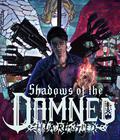Buy Shiness: The Lightning Kingdom
The PS2 era was the last time the JRPG was prominent among gamers. The platform offered grander ideas and mechanics that pleased genre fans. Alas, things got pared back significantly on the PS3, with players significantly decreasing their output, and that is even more prevalent on the current generation. The smaller studios are keeping the mantle alive and have aimed for portable platforms as well as re-releasing the same games on PC. Shiness: The Lightning Kingdom is unusual in this regard, as it has the familiar traits from the JRPG genre but with French origins. It is an ambitious piece of work, and while it may not be a prime example of the genre's best, it is a pretty engaging game.
Eons ago, the planet of Mahera was harmonious, and everything was tied together by the spiritual energy known as Shi. As the Shi dwindled, wars between the various races broke out, and the planet exploded, causing everyone to relocate to Meteoras, the floating island leftovers of the planet itself. You play the role of Chado, a Waki from Kimpao that has the ability to see and hear the Shiness, the spirits of the once-whole world. Along with his friend Poki, the two search for the Lands of Life to restore the world's harmony. Along the way, their airship crashes, and they get mixed up in the affairs of a runaway member of royalty and her bodyguard as they try to escape her evil family while investigating the evil caused by an energy known as Dark Shi.
The story feels rich as far as background goes, but the game barely has time to explain things to give the player a better idea of what's going on. It spits out plenty of terms and names of incidents that all seem important, and you'll eventually figure out their meaning, but expect to be lost much of the time. Though nostalgic for some, the game also moves along at a slow pace in this department. It takes several hours before the game finally moves on from the sleepy little village, and each area's exploration time is just as long, if not longer. If you're used to modern RPGs that move things along at an action-game pace, this can be a numbing experience.
A familiar story can usually be buoyed by great characters, and you get a sense that the ones here will fit the bill nicely. As expected, they follow some of the more familiar tropes: a plucky young adventurer who can be hot-headed at times, the bumbling mechanic who serves as comic relief, a misunderstood rogue, and the tough bodyguard with some heart. You'll immediately identify those characteristics when they show up.
At the same time, those characters aren't helped out by a few interesting design decisions. The dialogue is off in places, and it reads oddly during the translation to English. Lines that show up here and there that don't sound right once you read it. The game also has characters be emotive during in-game dialogue sequences. It's a good decision on paper, but the actions during those scenes are very exaggerated. Actions that should signify joy look like they're mocking in nature, while grunts of annoyance convey pure anger instead. With the amount of dialogue here, the whole thing is like a bad overacting job, robbing scenes of their intended gravity.
Shiness fits more into the action mold than something more traditional. On the exploration side, you're in a semi-open 3-D world where all of your party members are visible on-screen at the same time, and they follow you as a group instead of forming a single-file line or merging into the main character. Platforming plays a factor, as you have a sprint button that determines jump distance, and you can sneak around, which is perfect for avoiding fights with visible enemies, so random encounters aren't a threat. Sneaking is also useful for hunting, as you sneak up on small animals and snatch them for valuable items that are used later in exchange for other goods from traveling shopkeepers. The game also features a few puzzles that are easy to solve but require you to play around with each person's inherent powers, such as linking crystal nodes to those of a similar color, using telekinesis to move objects, using a whip to swing around via specific contact points, and conjuring stones to place on switches.
There are a few issues with the exploration side of things. There are lots of invisible walls in seemingly open areas, forcing you to take the long way around even if the distance between elevations isn't that high or you can cross gaps with a running leap. It doesn't take long for enemies to respawn in their same spots, which is fine if you're grinding for XP and items, but it's bad if you're simply trying to run through a level. Switch puzzles also reset anytime you leave an area and come back; it's annoying since all of the other puzzle types are unaffected if you leave the area and return later.
While the exploration aspects will feel familiar, the combat system certainly doesn't. Once you engage in an enemy, Shiness immediately switches to a fighting game style similar to the Naruto: Ultimate Ninja Storm series. Placed in an arena, you go one-on-one against an enemy, attacking and dodging in real time. Basic kick and punch combos are at your disposal, while blocks and parries are available if you want more than just dodging. You can use items and magic spells, either on their own or in conjunction with starting melee attacks at the cost of some tension meter. If you're fighting against a group, battles are still one-on-one, but the new opponent immediately comes in once another foe is defeated. Conversely, the same happens to you if you still have another party member in reserve. You can tag in a fighter in the middle of a bout, but those hoping to execute tag team moves will be disappointed by their absence.
Though the combat system may seem simple, it has some depth. The magic spells you use have elemental colors, and timing your mana refills and magic use to the color instances can speed up mana regeneration and increase the strength of your spells, respectively. You can also have your allies perform spells when not in combat that heal or buff you. Those are activated based on enemy health, your health, or elemental status, and there's a fine-tuning that can be done so that none of the perks feel like they occur too late in a fight.
Like the exploration sections, the combat can also be problematic in parts. Parrying might be relegated to a single button press, but you'll need some expert timing to get it right. Even then, the visual cue for a successful parry is so subtle that you'll miss a few counters because you didn't know you had stopped the attack in the first place. Combat starts almost immediately after some cut scenes, and you're left at an immediate disadvantage since the enemy often gets in a few quick hits. Some boss fights are also infuriating since you get caught in infinite combos due to a bevy of unblockable moves and your inability to execute a dodge.
The really big issue that goes beyond combat is the camera. If you activate the option, the lock-on feature is automatically on during combat, but the camera does a terrible job tracking the enemy. There are times when the enemy is closer to the camera, and you'll lose your position pretty quickly. Other times, the camera loses the enemy altogether as if the lock-on feature were disabled. The presence of walls also hinders camera movement, and large objects like shrubbery mean that the camera zooms in so close that your best strategy is to hit the air and hope you make contact. If tweaked, the game would be much better, but as it stands now, the camera will result in a few game over states or lost characters.
For the most part, the graphics are very nice. The anime-like structure of the characters and environments are done well, and some areas make good use of particle effects to enhance scenery. Lighting does the job well enough considering that this is an Unreal Engine 3 title. That being said, there is some object detail pop-up if you use the telescope to scan an area. The frame rate is quite low, with some slowdown in places, something you don't expect from an old engine on more powerful hardware.
The audio is quirky but still commendable. The music is good but gets repetitive. It fits the situations well enough, but it won't exactly stick with you once you turn off the game. The voices come off well, even if it seems like everyone has anger issues, while the use of an original language outside of cut scenes is a nice touch. Effects are good, though some are louder than others, but what will bother some people is the lack of the effects in some places. One boss fight, for example, had a crowd of spectators to witness the fight, but you never hear them, so that deflates the importance of the moment.
Overall, Shiness: The Lightning Kingdom isn't that bad. The story is good enough, if a tad generic, while the characters are likeable if you can get past their odd dialogue and exaggerated reactions. Outside of a pretty finicky magic and parry system, the combat is done well for those who crave real-time action over menus, and some of the other systems bring some depth to that. Presentation is decent, but the camera can be enough to put off some people. If you're craving a game that sticks to some JRPG standards, Shiness isn't a bad one to check out once you're done with the heavy-hitters on the system.
Score: 6.5/10
More articles about Shiness: The Lightning Kingdom










 Shiness: The Lightning Kingdom is an RPG featuring an enthralling universe and an atypical, hyper-dynamic combat gameplay.
Shiness: The Lightning Kingdom is an RPG featuring an enthralling universe and an atypical, hyper-dynamic combat gameplay.






















